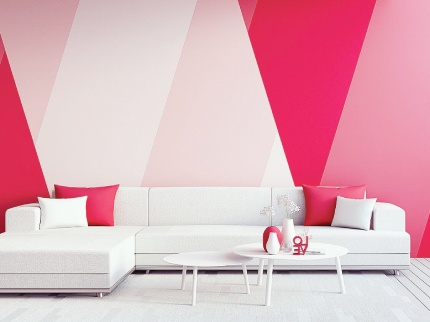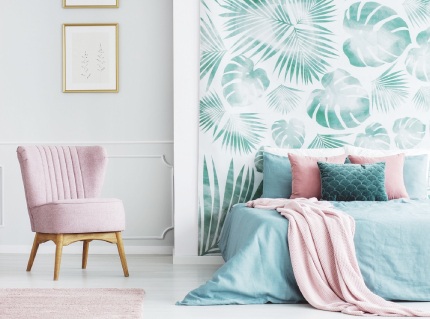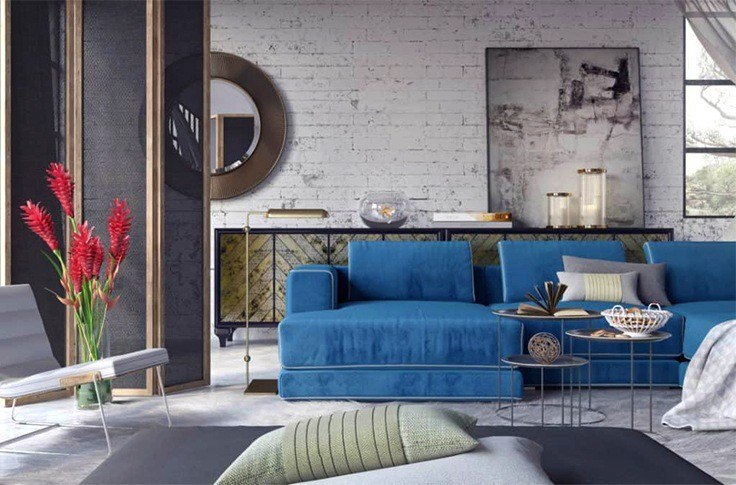It’s time to plan the arrangement of your home and the excitement levels are boiling. Where should you start when there is so much to think about?
Is it enough to pick everything in your favorite color, or should you follow certain rules? What kind of furniture would go well together?
Interior designers have come up with an answer to every question a long time ago. In this article, we will be sharing with you the most important rules that are also quite simple to follow for a successful interior design in your own home.
What are the Biggest Donts of Interior Design
We start with the don’s because people go in the wrong direction so often when they haven’t made their research and learned what to avoid.
Fortunately, it’s quite easy to avoid all 5 of these things:
1. Don’t Use too Many Colors
 Using a different color for each room is something a lot of people are tempted to do, but it will prevent you from creating cohesion in your home interior. Choose up to three main colors and add some hues to your palette to create variety and rhythm.
Using a different color for each room is something a lot of people are tempted to do, but it will prevent you from creating cohesion in your home interior. Choose up to three main colors and add some hues to your palette to create variety and rhythm.
2. Don’t Choose Wall Color First
With the walls taking up so much space in our home, it sounds natural that the first color we would have to choose would be the color of the walls, but interior designers tell us something different. Firstly, plan all the furniture and home décor, and then choose a wall color that best suits and complements the already present colors in your home.
3. Don’t Try to Match Everything
Don’t try to match every piece of the interior with every other element in terms of style and color. Furniture and home magazines show you perfectly arranged rooms where everything matches, but their purpose is not to show you what good interior design is or how to arrange a home.
In a real home it’s natural to have elements from different styles, so don’t always stick to a formula when choosing the pieces for your interior.
4. Don’t Place Furniture Right on the Walls
The sofa should be placed right next to the wall so that there is space in the center of the room, right? Well, interior design experts tell us differently.
Think of alternative solutions and leave enough breathing space for your furniture pieces to make the space look more spacious and eye-catching.
5. Forget Tiny Plants
You might be tempted to buy all your favorite decorative plants in small pots and place them all over the room, but that will only create a sense of clutter and it will make you feel boxed in.
If you love plants, try to vary sizes and choose plants that make a statement.
What are Some Interior Design Dos According to Experts
Enough with the negative part, now let’s see what are some good things to do while planning the arrangement of your home. This is some general advice that you could later on tailor according to your own tastes and preferences.
Here is what to do:
1. Choose Accent Pieces
 Although you shouldn’t overdecorate, a few accent pieces will bring life to the room. Depending on what the overall style of the room is, choose some decorative elements that will match the style but also stand out and grab the eye.
Although you shouldn’t overdecorate, a few accent pieces will bring life to the room. Depending on what the overall style of the room is, choose some decorative elements that will match the style but also stand out and grab the eye.
Find some decorative elements that also speak of who you are and what your taste is. For example, if you are a music lover, display some records to immediately send a message to your guests.
2. Mix and Match Textures
Textures have a way of bringing a room to life and creating a cozy domestic atmosphere. If you want your place to truly feel like home, choose differently textured elements such as decorative cushions and interior textile like curtains and rugs.
Vary differently patterned decorative elements, just remember to not overdo it. Stick to a few different textures and patterns and don’t have each element in your home differently textured.
3. Use a Bold Color in a Small Space
Using a dramatic color might not look well in the living room or the kitchen for example, and it could have a negative influence on your mood, but it could be a statement in small passing rooms like hallways and pantries.
Using bold dramatic heavy nuances brings attention to small places we tend to overlook and creates cohesion in the interior design.
4. Get Inspired by Culture
As you travel and you view different pieces of art and culture, note everything that grabs your attention in relation to interior design, such as interesting colors or creative furniture arrangement.
Make a scrapbook of inspiration to rely on while choosing the different elements of your home arrangement.

My name is Scarlett Mitchell and i am an author and editor in the home topic website – FemCasa.com.
I’m just an enthusiast who wants to share her visions, ideas and advices, when it comes to decorating every part of your home until it becomes the perfect relaxing place for you and your family.

